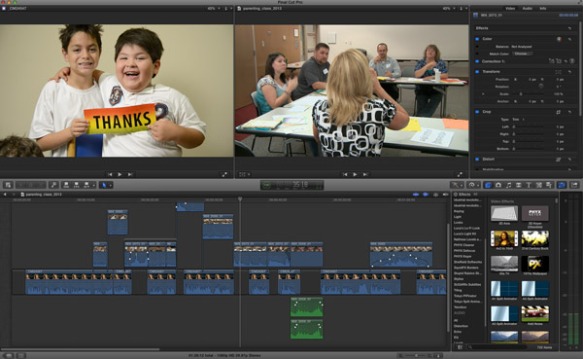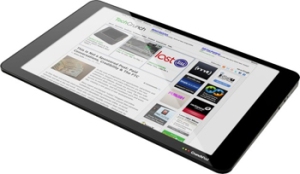The cries were fierce and seething. What did Apple do to my Final Cut Pro? It has been a little over two years since Apple software engineers upended the video-editing universe with the release of an “all new” Final Cut Pro X version of the proverbial video-editing program. Not long after the initial discussions as to whether it is called “X” or “Ten” subsided, did the bitchin’ and moaning among the ranks start.
Me? Well, I just dove in with gusto. Unfortunately, many fine editors made one big mistake. They tried to use the program without investing the time to learn how to use the new features—many of which were either a totally new way to edit (magnetic timeline) or ran counter to the way they worked in FCP 7 (dual viewers, bins etc.) They complained. Then they complained some more. Change was tough, especially for editors that lived in the old FCP paradigm since version 1.0
Before I even tried to edit my first project, my first stop was IzzyVideo’s excellent free FCPX video tutorials. I watched each several times until I began to grasp all the new concepts–connected clips, skimming, magnetic and secondary timelines, keywording and so on . I made sure I knew what each button in the interface did.
My first story edit went off without much fanfare. Still, I wasn’t totally convinced FCPX was better than my beloved FCP 7. The magnetic timeline drove me nuts, the single view monitor was strange and all that skimming took some time to get used to. I soldiered on and by the end of my third or fourth project, I started to jell with the program. Having to edit something in FCP7 now felt foreign. I kept wanting to skim clips in the browser.
My foray into FCPX was not without a hiccup that almost gave me a heart attack. Since its release, Apple has moved quickly to restore some of the lost features in the previous version. Multi-cam editing, XML export and dual viewers to name a few. But with all this updating, some versions became show-stopping unstable. Discussion boards were full of “FCPX didn’t save my project and now it is gone” type posts, which drove many editors over to the Adobe Premiere or Avid camps for good.
I was just completing a week-long editing project in version 10.05 when I started to trim a black slug at the tail end of my video. All of a sudden, poof, my entire project timeline turned gray. All the clips just vanished. A trip to the Apple discussion boards turned up many angry folks in the same boat as me. In typical Apple fashion, they shrugged their shoulders with silence and it took a user to figure out a convoluted solution to restore corrupted projects.
It made me realize at the time how much more FCPX needed to germinate before it was ready for real world work. That was a year ago and things seem to have smoothed out. My editing speed has accelerated dramatically the more I use FCPX. I feel much more comfortable and trusting of the program. I taught a video storytelling and production class at a community college and I found the students learned the basics much faster than they did in Final Cut Express.
So for now, Adobe Premiere sits in my applications folder unused. I have chosen FCPX as my video editing program. I continue to suck up as much information on how to use the program as I can. Lynda.com has really stepped up and provided some of the best FCPX tutorials around. If you invest the time, I believe you will become much more comfortable with FCPX. It truly is video editing reimagined. I look forward to what future upgrades bring.













